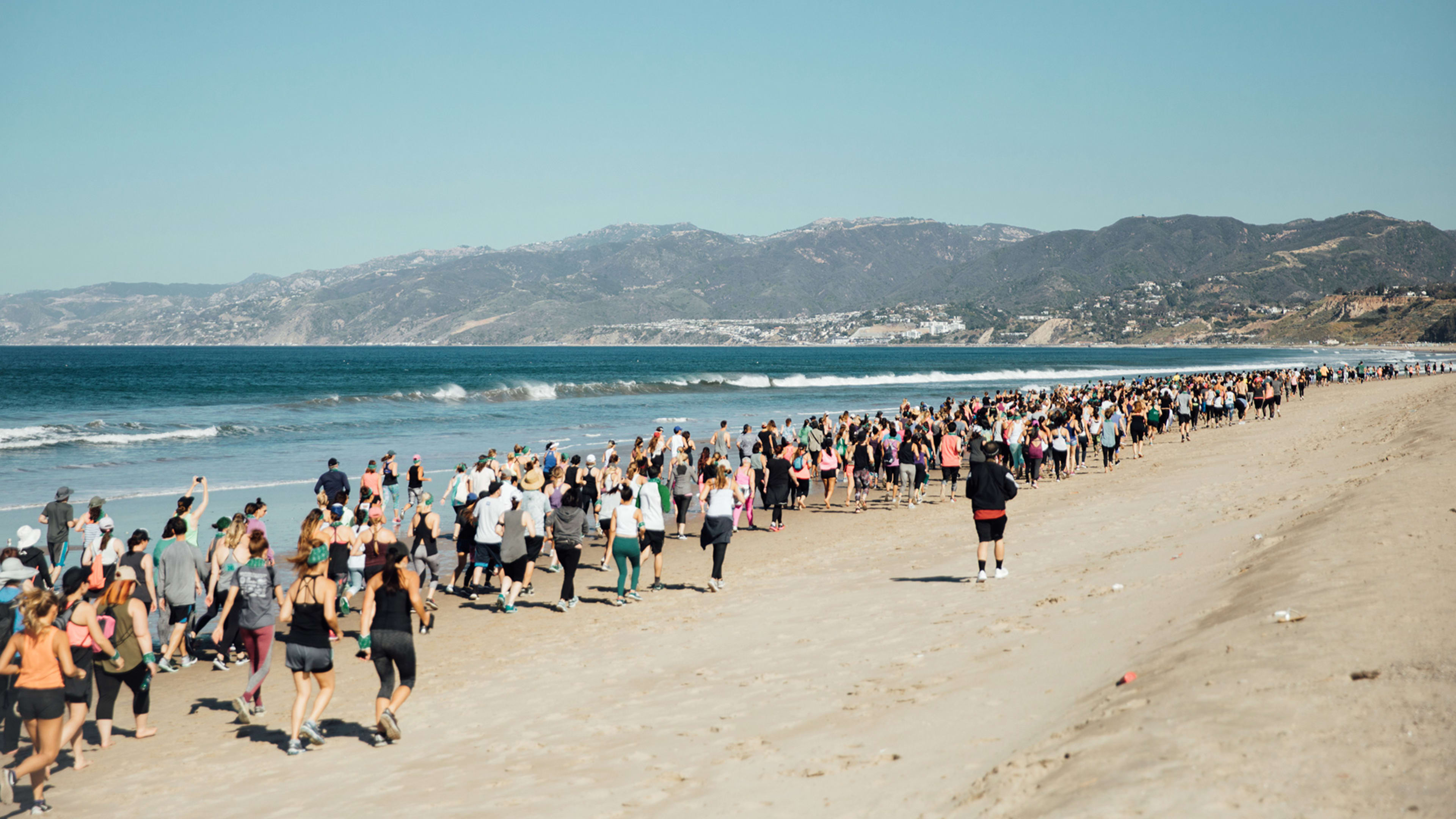“The universe is calling and your right leg is going to answer,” an exuberant yoga instructor commands over the speakers at the Santa Monica pier. With military precision, 2,000 athleisure-clad women move their limbs in unison.
I am at Wanderlust, an eight-year-old wellness festival that bills itself as an “all-out celebration of mindful living” and throws several multi-day gatherings around the world each year. On this sunny April day in Santa Monica, groups of women (and a sprinkling of men) align themselves on rainbow-colored yoga mats that are in perfectly spaced rows on the pier’s half mile-long astroturf.
Depending on what package they’ve purchased—$40 for one day, $500 for four—attendees will enjoy group yoga, meditation, eating, shopping, a “mindful walk” on the beach, a hula-hoop workout, and various other activities. Around 11 a.m., some two hours into the event, the crowd on the pier erupts into cheers when a DJ takes the stage in between scheduled fitness activities.
“Let’s make some memories! Who wants a free T-shirt?” the DJ shouts to rapturous applause.
He then leads the audience into a chant of “No more bombs, no more wall, the whole world should be a festival!” It quickly catches on, with participants bobbing their heads and shaking their stainless steel water bottles in agreement. They put their hands in the air, rave style—only no one here seems to be drunk or tripping.
“Everybody link up,” the DJ says, at which point, the crowd links together, arm-in-arm, and starts swaying.
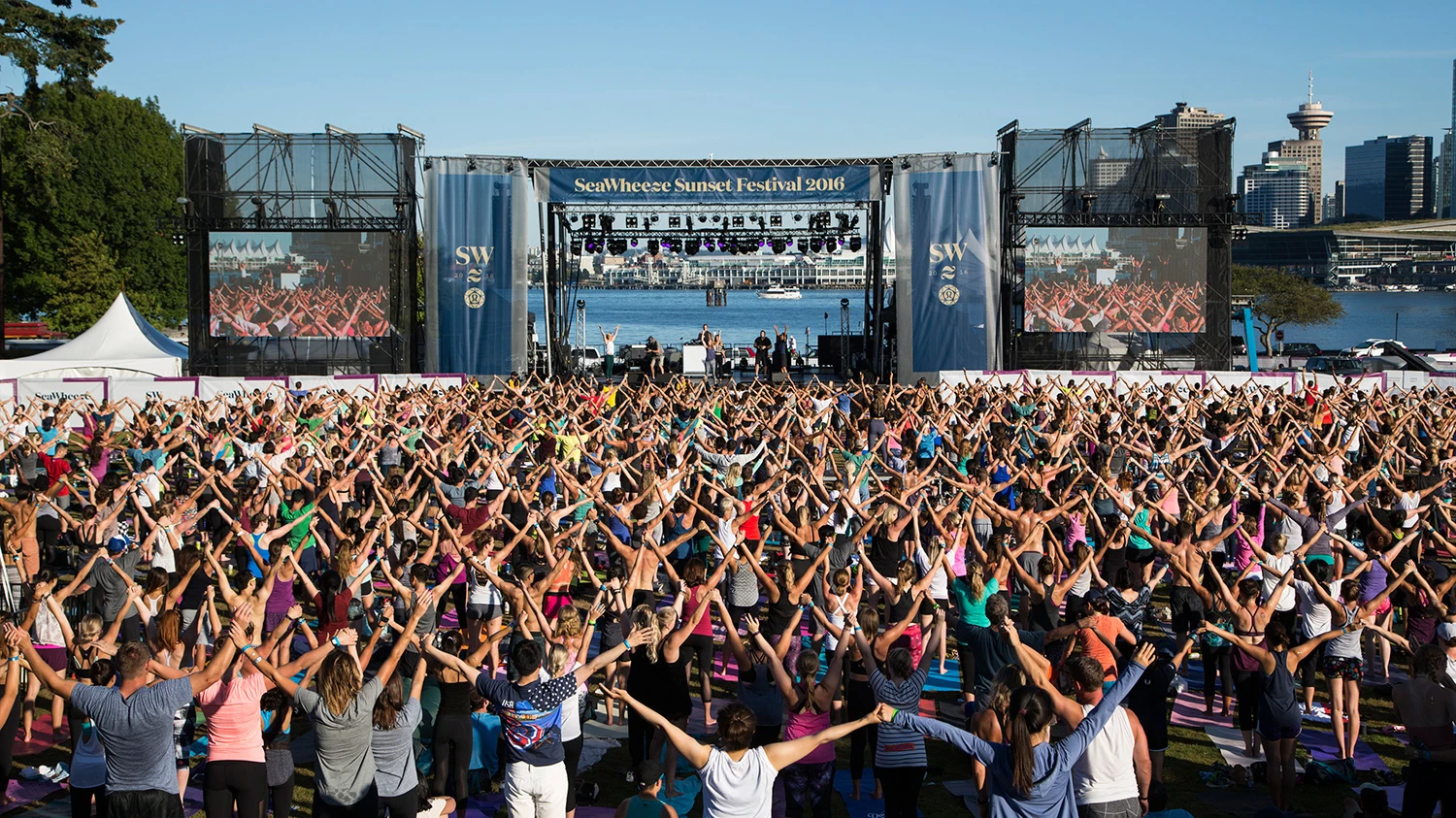
“If you want the whole world to be a festival, make some noise!” he shouts. The crowd goes wild, with one woman throwing her sweat-soaking bandana at the stage. “Hell, yeah!” she shouts.
The buzzing energy at Wanderlust might explain why there are currently almost 1,000 other festivals just like it in the U.S. and abroad. They range from pricier weekend resort getaways to more affordable one-day seminars. The audience for these body-mind-soul events is overwhelmingly female: An estimated 85% of the Wanderlust attendees are American women, in their late twenties through forties. They are health enthusiasts who come together to bond, set personal goals, meditate, and revel in the collective namaste vibes. They might go paddle boarding, partake in kombucha tastings, enjoy live music, or learn to mix essential oils.
Some festivals, like Lululemon’s SeaWheeze, might feature a half-marathon or other competitive activity, but the overall emphasis is less medal than mantra. “It’s much more about a holistic approach to health,” says Wanderlust cofounder Sean Hoess.
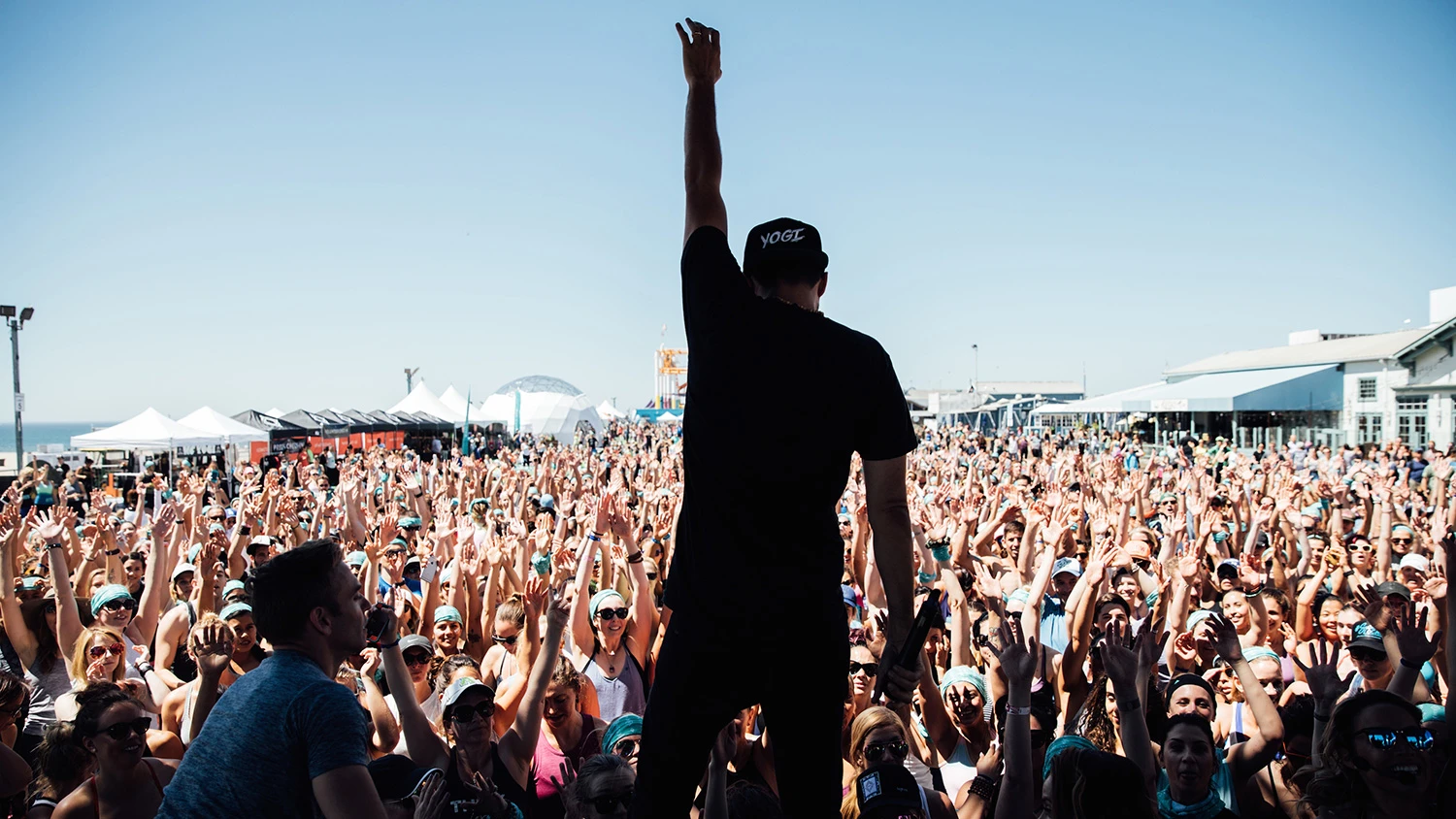
Growing at about 20% annually, wellness festivals are a significant piece of the $3.7 trillion global wellness market (which is worth three times the worldwide pharmaceutical market) and represent an increasingly important slice of the $563 billion global wellness tourism category. Almost every big city in the United States hosts an annual wellness festival of some kind (in addition to major international cities including London, Copenhagen, and Cape Town). Lululemon’s SeaWheeze festival is going on its sixth year (it sold out in 32 minutes this year). Paltrow’s Goop just announced its second conference, scheduled for winter 2018, and Wanderlust is on track to sell 100,000 tickets by the end of 2017. Virgin Sports, meanwhile, will launch festivals this fall, while Weight Watchers produced its first MeFest last year.
Beth McGroarty, research director of Global Wellness Institute, says the rapid expansion of these festivals makes it hard to pin down exactly how many there are around the world: “It’s hard to keep track … It’s huge.”
https://www.instagram.com/p/BTjguowhG-F/
In The Company Of Women
It’s not surprising that wellness festivals are a female-driven phenomenon: Women represent 72% of yoga practitioners in the U.S., according to a recent report by The Yoga Alliance in partnership with the Ipsos Public Affairs research firm. They also led the athleisure fashion revolution, helped boutique gyms like SoulCycle and Pure Barre flourish, and turned Zumba into one of the most sought-after workouts around. “Women are certainly driving the broader fitness trends,” says Jason Kelly, author of Sweat Equity: Inside the New Economy of Mind and Body.
Attendees for the Wanderlust festivals are predominantly college-educated women, with 80% holding a four-year university degree or higher, according to the company’s research. They are between the ages of 25-44, with backgrounds ranging from yoga instructors to company CEOs. To the women showing up to brand-name yoga classes in Tory Burch leggings, wellness is a sign of social standing and luxury. These are grown-ups who want to unwind, not get wasted.
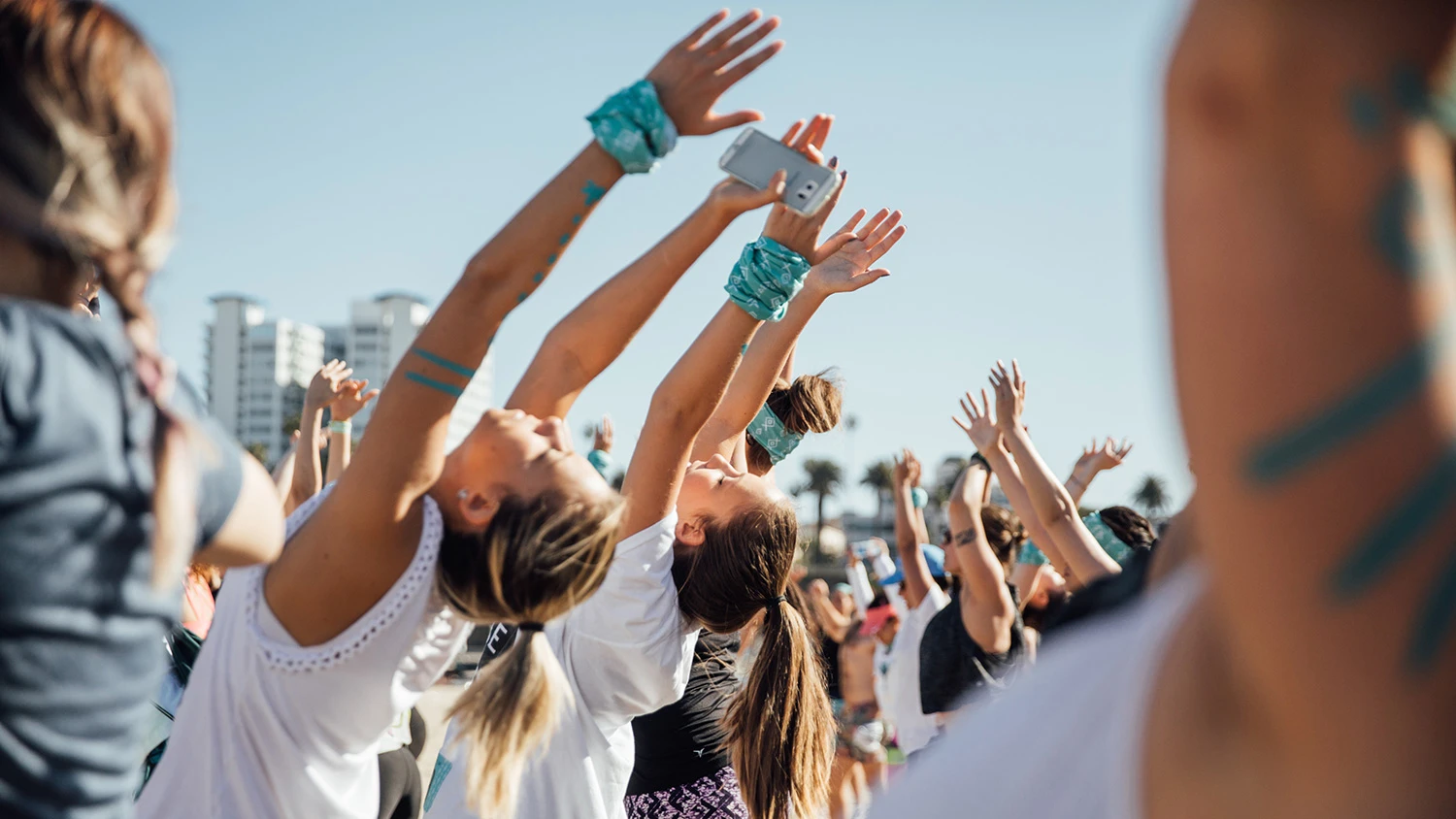
For many women, the events are also an opportunity to meet and bond with like-minded individuals. Wellness festival directors report a high number of group bookings for girls’ getaways, mother-daughter trips, college reunions, and even bachelorette parties. These attendees want to socialize just as much as they want to relax during their time off. They crave a break from their screens and relief from the so-called “age of loneliness.”
In the report “Festivals Shift from Wasted to Wellness,” the Global Wellness Institute found that 18 to 34 year-olds are the most digitally interconnected generation, but also report higher levels of loneliness and stress than any other age group. During his book research, Jason Kelly repeatedly encountered Americans who described group exercise as an antidote to technology dependence.

There’s Gold In Them Thar Yoga Mats
After the morning yoga rave, I take a break at the “kombucha garden,” a picturesque picnic area overlooking the Pacific Ocean that’s sponsored by Brew Dr. Kombucha. Here, attendees can sample different flavors of the probiotic beverage. Nearby, just behind the communal practice area on the pier, almost 20 vendors have set up shop to promote their goods, which range from green juice to organic beef jerky to tie-dye clothing with the tagline “make sustainability sexy.”
Natural skin care brand Ole Henriksen, Kashi, and cult-favorite coffee brand Bulletproof also have booths. A shiny Ford Fusion overlooks the pier as spokespeople hand out free tote bags. Another sponsor, Adidas, donates $1 to women’s causes for every person who digitally “submits a mantra” to their user-generated content site.
These festivals can feel like a parade of brands lifted straight out of Whole Foods. Some brands offer their products for free in goodie bags, while others pay a few thousand dollars to host a booth. The Telluride Wow festival, which its organizer says costs $35,000 to produce, charges companies $10,000 for a title sponsorship. Wanderlust, which did not share costs of event production, reports that on average, it secures 10 sponsors for a one-day event and 22 sponsors per festival. Sponsorship fees start at $5,000 and up.
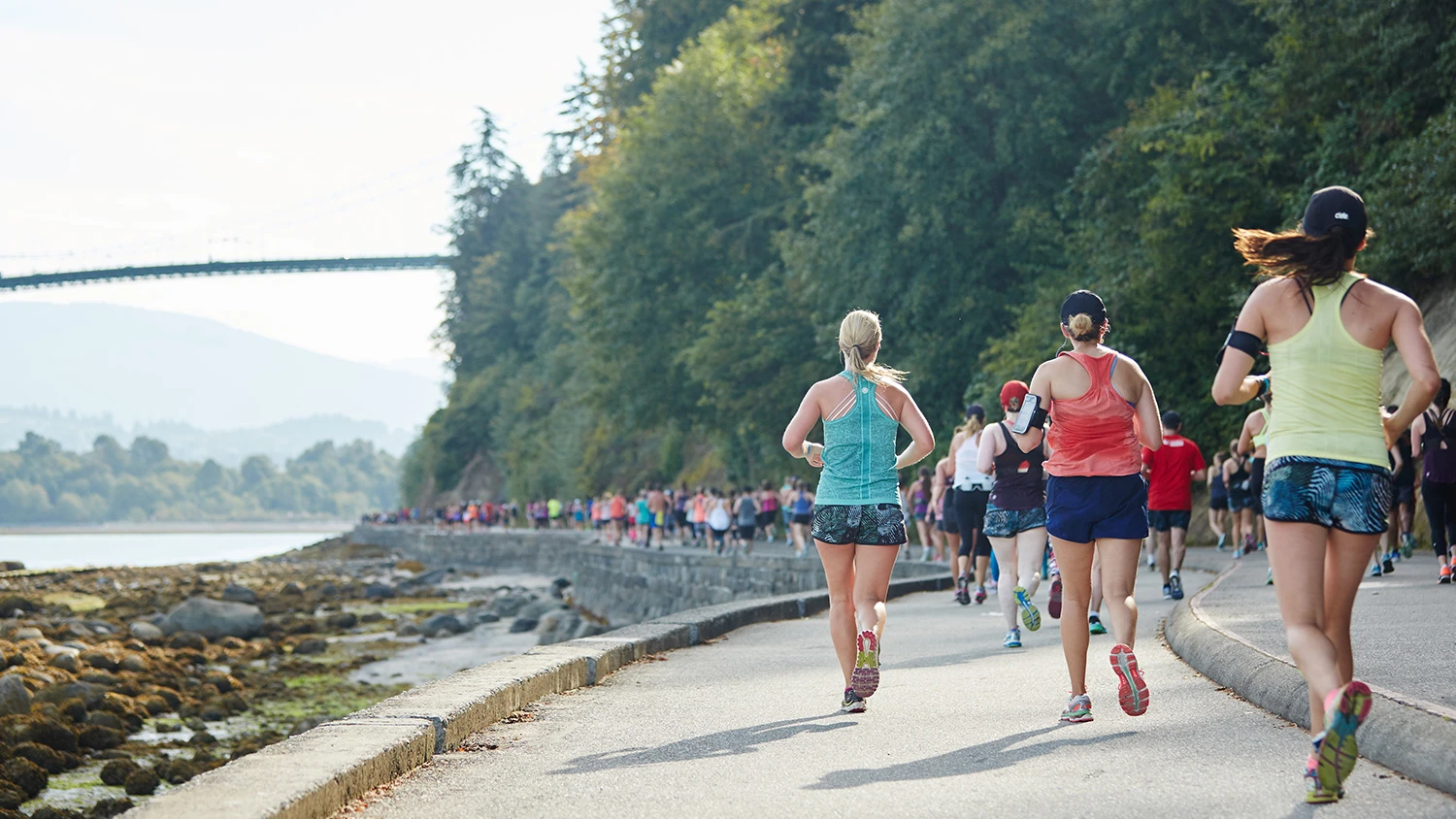
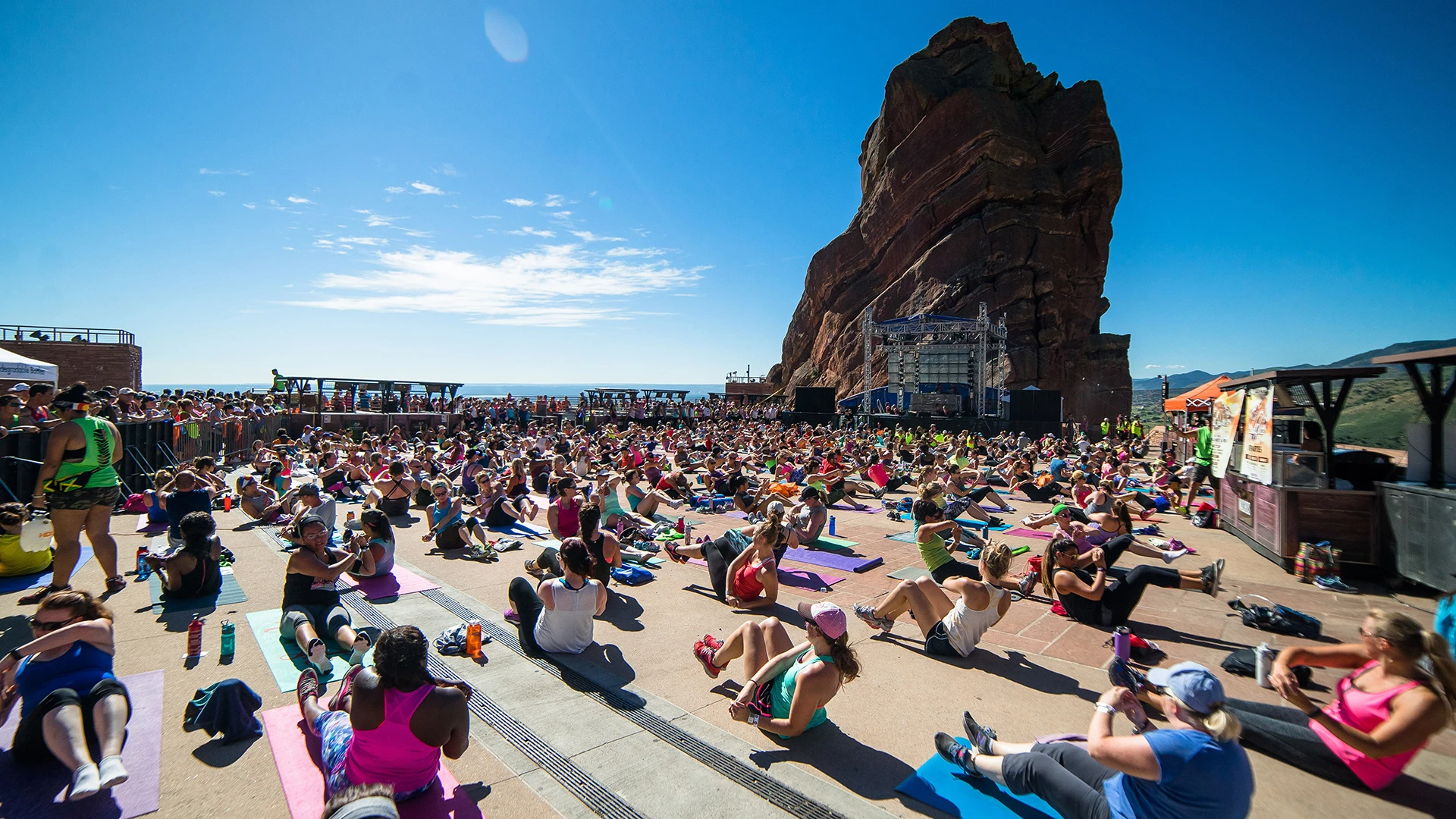
It’s not hard to understand why companies are clamoring to sponsor these events. Fitness on the Rock’s 10,000 attendees are 90% women, aged 22-38. Considering that women drive more than 80% of consumer purchases, according to Bloomberg News) and control about $20 trillion in global annual consumer spending (as reported by the Harvard Business Review), wellness gatherings are the definition of golden marketing opportunities.
In short, women rule the festival world.
As Big As Coachella?
Wellness festivals are hot right now, but can they continue to grow? Even large-scale fitness events like Tough Mudder experienced recent declines.
Jason Kelly, the author, points out that wellness festivals have the benefit of high repeatability, thanks to the social element. They can serve as yearly reunions for friends. As for the future of the events, he believes that the festivals will become more centralized as a select few dominate the market. “People have only so much time to spend on these things,” Kelly says. “There’s not enough room for many, many of them. Some key brands are going to emerge and so there will be little bit of winnowing.”
As for those master festivals–the SeaWheezes and the Wanderlusts–the Global Wellness Institute’s McGroarty predicts they will get even bigger.

Upon leaving Wanderlust, I stumble upon two participants in their mid-twenties chowing down on pizza at the Del Frisco’s across the pier. I ask whether they feel a wee bit guilty undoing all that hard yoga and hula-hooping with a decadently cheesy lunch.
“We’re on vacation,” one answers, laughing. “We’re just here to have fun!” The other, as she bites into her pepperoni slice, agrees: “Oh yeah, we do this all the time.”
Recognize your brand’s excellence by applying to this year’s Brands That Matter Awards before the early-rate deadline, May 3.
